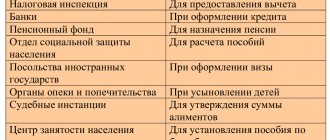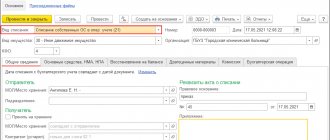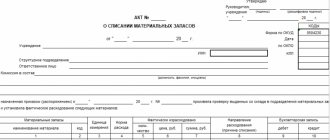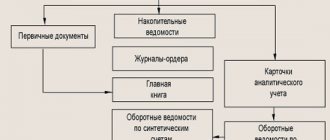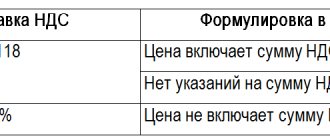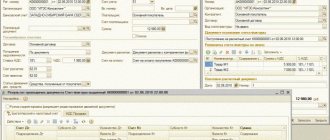Non-profit organizations are those that do not have the goal of making a profit from their activities. Their work has a social orientation. They are created to perform any cultural, religious, scientific and other tasks. In this article we will look at how accounting and tax accounting is carried out in a non-profit organization.
The activities of such associations are regulated by the chart of accounts, certain accounting regulations, as well as the following regulatory documents:
- Law on Accounting No. 402-FZ;
- Civil Code (Civil Code of the Russian Federation);
- Law “On Non-Profit Organizations” No. 7-FZ of January 12, 1996;
- Law “On Public Associations” No. 82-FZ of May 19, 1995.
Features of accounting in non-profit organizations
Non-profit organizations (NPOs) maintain accounting and prepare reports in accordance with the legislation of the Russian Federation. To maintain it, management is obliged to introduce the position of an accountant or draw up an agreement for the relevant services with another company.
Operations related to the activities prescribed in the Charter and entrepreneurship are carried out separately. Income and cost accounts are presented in the table. (click to expand)
| Activity | Check |
| Non-profit | 86 “Targeted financing” |
| Entrepreneurial major | 90 "Sales" |
| Other entrepreneurial | 91 “Other income and expenses” |
Unlike commercial companies, an NPO engaged in entrepreneurship does not have the right to distribute the income received during the period between participants. Profits must be used exclusively to fulfill the statutory goals of the association. The following entry occurs in the accounting:
Dt 90 Kt 99 - reflects the profit received at the end of the reporting period.
At the end of the year 99 close:
Dt 99 Kt 84 - net profit for the year is taken into account;
Dt 84 Kt 86 - financing of statutory work.
If the commercial activities of the NPO resulted in losses, make the following entries:
Dt 99 Kt 90 - loss for the period (month) is taken into account;
Dt 84 Kt 99 - annual loss is reflected.
The loss is covered from certain sources. For example, from the reserve fund, from last year’s profit, additional investments of participants, etc.
The following entries take place:
Dt 76 Kt 84 - the loss is repaid through membership fees;
Dt 86 Kt 84 - due to last year’s profit;
Dt 82 Kt 84 - from the reserve fund.
Example No. 1. Write-off of business results
NPO "Barrier" provides services for a fee. For 2016, income amounted to 614 thousand rubles, expenses - 389 thousand rubles.
Postings are made throughout the year:
Dt 62 Kt 90,614,000 - revenue from business is taken into account;
Dt 90 Kt 20,389,000 - the cost of services has been written off;
Dt 90 Kt 99,225,000 - the result of the association’s work is taken into account.
At the end of the year, the accountant will write:
Dt 99 Kt 84,225,000 - profit written off;
Dt 84 Kt 86,225,000 - annual profit added to target amounts.
An NPO can take property into account as fixed assets if the following conditions are met:
- Application in the work established by the Charter, for the needs of management or entrepreneurship;
- Application for a period exceeding one year;
- Donation or transfer of ownership to other persons is not provided for.
The object is assessed at market value at the time of registration. The cost of fixed assets is reflected by the entry: Dt 08 Kt 86.
For fixed assets, NPOs charge depreciation instead of depreciation, like commercial companies. The data obtained is used when calculating property tax based on the annual average value of fixed assets (Article 375 of the Tax Code of the Russian Federation).
The amount of depreciation is shown on the off-balance sheet account, and fixed assets are shown on the balance sheet at their original cost. Otherwise, the asset will not be equal to the liability. A feature of the accounting of fixed assets received from earmarked funds is the use of accounts. 83. In the balance sheet, its balances are reflected in the line “Real estate and movable property fund”.
AP IT Co.
Accounting in non-profit organizations (NPOs) differs from accounting in commercial organizations in a number of ways. Features of accounting in non-profit organizations include such operations as accounting for membership fees of NPOs, accounting for donations, depreciation of fixed assets of NPOs, accounting for sources of funding for NPOs and many other specific operations.
- Accounting in non-profit
- Cost and implementation of 1C for non-profit organizations
- Functions and capabilities of 1C for non-commercial organizations
- Exchange with "1C: Salaries and personnel management 8"
- Basic Version Limitations
- 1C user support for non-commercial organizations
The 1C:Accounting 8 configuration automates the accounting of commercial enterprises at a good level, but is less suitable for accounting in non-profit organizations.
offers you the software product “VDGB: Accounting for a non-profit organization”.
The program is an industry-specific 1C accounting solution for non-profit organizations .
AP IT provides a range of 1C implementation and support services for non-profit organizations
"VDGB: Accounting for a non-profit organization."
tel.:(495)565-35-66,(499)259-32-60
Accounting functions in non-profit organizations
CHECKED!
The “VDGB:Accounting for a non-profit organization” program includes electronic submission of reports through the “1C:Reporting” service directly from the 1c program for a non-profit organization itself!
Accounting for non-profit organizations differs from accounting for typical self-supporting organizations. Therefore, the accounting program for non-profit organizations has been maximally modified to meet the requirements of non-profit organizations.
The software product “VDGB: Accounting for a non-profit organization” is designed to automate the accounting of non-profit and autonomous institutions of various types.
Users of the program “VDGB: Accounting for a non-profit organization” can be the following organizations:
- associations
- funds
- associations
- unions
- non-profit partnerships
- unions
- cooperatives
- consumer societies
- religious associations and societies
- bar association
- notary chambers and others.
Cost of 1C for a non-profit organization
Program name | Basic version (RUB) | PROF version (RUB) | Set for 5 users (RUB) |
| VDGB: Accounting for a non-profit organization. | 8 100 | 17 500 | 33 500 |
| VDGB: Accounting for non-profit partnerships. | 8 100 | 17 500 | 33 500 |
| VDGB: Accounting for unions, associations, associations. | 8 100 | 17 500 | 33 500 |
Buying 1C Accounting for a non-profit organization from AP IT
You receive the following services:
Service | Basic version | PROF version | Set for 5 users |
| Software product delivery | Performed | Performed | Performed |
| Installation on computers | For one workplace | By number of licenses purchased | |
| Initial setup | Entering information about the organization, setting up accounting policies | ||
| Demonstration of work, consultations | — | On the day of delivery and installation of the program for basic operations | Within one week after installing the program for any questions |
Thus,
By purchasing “VDGB: Accounting for a non-profit organization” in , you receive an initial set of services for implementing the “Accounting for a non-profit organization” program at your enterprise. Completing these works is enough to start operating the system yourself. In the future, you can decide on the need to order additional services for the implementation and support of the “Accounting for a Non-Profit Organization” program.
Delivery time and completion of all work
implementation of the program “VDGB: Accounting for a non-profit organization” - 2-3 days from the date of payment.
Get started with "VDGB: Accounting for a non-profit organization"! as soon as possible
tel.:(495)565-35-66,(499)259-32-60
Functions of “VDGB: Accounting for a non-profit organization”
Accounting in non-profit organizations is based on maintaining the sources of funding for the NPO. To solve this problem, a directory of funding sources has been created in the configuration “VDGB: Accounting for a non-profit organization”.
Maintaining separate records by funding sources:
- maintaining a list of sources of funding for a non-profit organization;
- separate accounting of all business transactions by sources of financing;
- a mechanism has been implemented for automatically conducting business transactions using distributed (composite) sources of financing, when transactions must be divided in proportion to the composition of the source;
- the ability to control the expenditure of funds by funding sources;
- possibility of making various charges/contributions;
- the ability to automatically distribute the amounts of business transactions across several sources of financing;
- the peculiarities of VAT accounting have been taken into account - the possibility of accepting VAT for offset or inclusion in the cost of purchased objects has been implemented;
- Features of accounting for fixed assets have been implemented, fixed asset accounting and depreciation calculations have been provided;
- planning is provided with different periods (month, quarter, year) and the ability to compare planned and actual receipts and expenses.
Sources of funding in 1C for a non-profit organization can be organized in a simple list, or can be maintained in the form of a hierarchical tree for ease of accounting in the case of a large number of sources.
For each source of funding for an NPO, a set of properties and parameters can be specified that determine its functionality.
Separate accounting by sources of financing manifests itself when working with the balance sheet. For almost all accounts, you can see movements both in the usual context of 1C accounting analytics and taking into account sources of financing. Those. in the 1C program for a non-profit organization, one more analytics has been added to almost all accounts in the 1C accounting chart of accounts. For example, in accounts 50 and 51, you can keep track of donations and membership fees in a non-profit organization, while separating them by source of funding. For example, you can enter sources with the names “Membership fees”, “Donations”, “Other income” and in accounts 50 and 51 receive a report of cash receipts broken down by each source.
On issues of accounting for donations in a non-profit organization, our material Reflection of donation transactions in 1C Accounting
Maintaining accounts 20,26,86:
- maintaining account 20 “Main production” in the context of two subaccounts: “Costs for business activities” and “Costs for non-commercial activities”; closing it on 86 counts;
- the ability to take into account expenses on the 26th account and close it on the 86th account;
- detailed analytical accounting on account 86 “Targeted financing and receipts” in two sections: “Items of expenses and receipts” and “Sources of financing”;
- Automatic closing of subaccount 20.3 “Costs for non-commercial activities” to account 86 “Targeted financing and receipts” with the document “Closing the month”;
- Automatic closing of subaccount 26.02 “General non-profit” to account 86 “Targeted financing and receipts” with the document “Closing expenses”;
Cost accounts in the VDGB: Accounting for a Non-Profit Organization program contain analytics by source. In addition, standard cost accounts contain subaccounts to separate transactions for non-profit and commercial activities that the NPO may conduct.
Users of the program “VDGB: Accounting for a non-profit organization” will be pleasantly surprised not only by the very fact of closing cost account 26 to account 86, but also by the ability to configure the distribution and correspondence of cost items of account 26 and expense items and receipts of account 86. Thus, users of the 1C program for NPOs they can independently set up the procedure for distributing expenses according to funding items.
Joint accounting of commercial and non-commercial activities in all areas of accounting:
- materials accounting;
- inventory control;
- accounting of trade transactions;
- accounting for cash transactions;
- accounting of fixed assets and intangible assets;
- production accounting;
- payroll;
- accounting for the economic activities of several organizations in a single database;
- application of any tax regimes (STS, UTII, regular taxation system, individual entrepreneurs) and transition from one tax regime to another in the working database in a few minutes.
The NPO accounting program allows you to work not only with information on non-profit activities. In 1C for NPOs, accounting sections similar to commercial activities are preserved and present. Since an NPO can also engage in commercial activities, in the process of recording business transactions you can choose what type of activity each business transaction belongs to.
The division of accounting into commercial and non-commercial activities is carried out by maintaining a directory of sources, as well as using various accounts and sub-accounts of the chart of accounts. For example, account 20.01 “Main production”
, and account
20.03 “Costs for non-commercial activities” . Or account 26.01 “General business commercial” , and account 26.02 “General business non-commercial” .
In addition, you can enter your own subaccounts to separate them by areas of work. When reflecting some business transactions, you can indicate which part (amount) of this transaction was carried out at the expense of commercial sources, and which part at the expense of non-commercial sources. Or split between several commercial and non-commercial sources.
1C reporting for NPOs
- in standard accounting reports (turnover balance sheet, account analysis, etc.) data can be generated by sources of financing, it is possible to group and select by sources of financing
- automatically filled NPO balance
- automatic filled-in Form No. 6 NPO with the ability to decipher each line
- automatically completed sheet No. 7 of the income tax return
- statistical reporting according to form 1-NPO “Information on the activities of a non-profit organization”
- statistical reporting to the Ministry of Justice according to form No. ON0001 “Report on the activities of a non-profit organization and information on the personnel of its governing bodies”
- statistical reporting to the Ministry of Justice according to form No. ON0002 “Notification of the expenditure of funds and other property”
- statistical reporting to the Ministry of Justice in form No. ON0003 “Information on the volume of funds and other property received by a public association from international and foreign organizations, foreign citizens and stateless persons, the purposes of their expenditure or use, as well as their actual expenditure or use.”
- reports in foreign currency for foreign grantors;
- accounting of currency transactions;
The 1c program for a non-profit organization contains the entire necessary list of accounting and tax reporting for a non-profit organization. Thanks to the accounting of a non-profit organization, reports in 1C are filled out automatically taking into account the entered data on the non-profit organization. The program contains both standard reports on commercial activities and industry-specific forms for non-profit organizations.
Exchange of data between NPOs and 1C: Salaries and personnel management 8
The program “VDGB: Accounting for a non-profit organization” is an accounting program and a small set of salary accounting capabilities. If you decide to keep track of the salary of a non-profit organization in the 1C: Salary and Personnel Management 8 program, then you will be able to use standard mechanisms for exchanging data on salary calculations (uploading the document “Reflection of salaries in regulated accounting”) between 1C:ZUP and "VDGB: Accounting for a non-profit organization."
After downloading the document “Reflection of salaries in regulated accounting”, you will need to set the sources for each line of the document. Otherwise, the interaction process is no different from the exchange between standard “1C: Accounting” and “1C: ZUP”.
Order “VDGB: Accounting for a non-profit organization”!
tel.:(495)565-35-66,(499)259-32-60
LIMITATIONS OF THE BASIC VERSION 1C for NPOs
The supply of different versions of accounting software for non-profit organizations is associated not only with the price of accounting software, but also with different functionality and capabilities.
NPO accounting software products:
- (code 4601546093226) VDGB: Accounting for non-profit partnerships. Basic version
- (code 4601546093233) VDGB: Accounting for a non-profit organization. Basic version
- (code 4601546093240) VDGB: Accounting for unions, associations, associations. Basic version
are single-user programs for automating the activities of various types of non-profit organizations. Compared to basic supplies, they have a number of limitations:
Technological limitations of the basic version for NPOs:
- Changing the configuration is not supported, you can only apply the standard configuration and install its updates;
- It is not supported to maintain records for several institutions in one information base, while it is possible to maintain records of several institutions in separate information databases on one computer;
- Only one user can work with one infobase at a time;
- Client-server mode is not supported;
- operation of distributed information bases is not supported;
- COM connection and Automation server are not supported.
1C USER SUPPORT for non-commercial organizations
Consulting via the hotline for registered users of the “VDGB: Accounting for Non-Profit Organizations” configuration, if they have a valid ITS Online subscription (issued for the purchased product), is carried out (VDGB LLC) by phone from 09:00 to 18:00, except Saturdays , Sundays and holidays, or by email.
Features of product support “VDGB Configuration: Accounting for Non-Profit Organizations”
To obtain service for registered product users:
- (code 4601546093257) VDGB configuration: Accounting for a non-profit organization,
- (code 4601546093264) VDGB configuration: Accounting for non-profit partnerships,
- (code 4601546093271) VDGB configuration: Accounting for unions, associations, associations,
necessary:
- Register the software product in (fill out the registration card and send it to either by mail or through the website https://online.1c.ru/reg/;
- Have a valid subscription to ITS, issued for “1C: Accounting 8” or ITS ONLINE, issued for “1C: Accounting 8 PROF.” Delivery for retail distribution" or on "1C: Accounting 8 PROF for 5 users. Supply for retail distribution";
- Have a paid subscription to ITS ONLINE (issued for configuration).
Features of support for the products “VDGB: Accounting for non-profit organizations. Basic version"
Consulting via the hotline for registered users of the “VDGB: Accounting for non-profit organizations” configuration. Basic version" is carried out (LLC "VDGB")
Receiving consultations is possible only after registering the software product (for which you need to fill out a registration form and send it to).
Registered users of software products
- (code 4601546093226) VDGB: Accounting for non-profit partnerships. Basic version
- (code 4601546093233) VDGB: Accounting for a non-profit organization. Basic version
- (code 4601546093240) VDGB: Accounting for unions, associations, associations. Basic version
have the right to receive free of charge:
- Developer consultation line services by email or telephone;
- Updates to the 1C:Enterprise 8 platform and configuration, including reporting forms, on the user support website https://users.v8.1c.ru/ or through partners .
To receive updates, the user must register the purchased software product with (fill out the registration card and send it to).
For additional support, users of the basic version can purchase an information technology support (ITS) subscription.
Order and start working with “VDGB: Accounting for a non-profit organization”!
tel.:(495)565-35-66,(499)259-32-60
Simplified taxation in non-profit organizations
NPOs have the right to apply simplified taxation. They can choose the simplified tax system upon creation by submitting a corresponding application to the tax office, or switch to the regime during the management process. Restrictions on the use of the simplified tax system are presented in the table.
| Index | Limitation |
| State | No more than 100 people |
| Income for 9 months | Not higher than 45 million rubles. |
| Residual value of funds | Less than 100 million rubles |
| Branches | None |
| NPO is not a manufacturer of excisable products | |
Organizations on the simplified tax system submit a single simplified declaration to the inspectorate every year. They are exempt from paying income taxes, property taxes and VAT. NPOs use a simplified method to calculate the single tax. When taxed “by income”, it is equal to 6% of all income received. With the object “income minus expenses” - 15% of the difference, and if there is no difference - 1%. (see → NPO taxation, rates in 2022)
Revenues used for statutory purposes are not subject to a single tax. This applies to grants, membership fees, donations, and subsidies for targeted needs. Simplified NPOs are required to account for income and expenses of available target amounts separately.
Under this system, the manager has the right to perform the duties of the chief accountant and not resort to the services of other organizations for accounting. The transition to the simplified tax system is beneficial for non-profit organizations engaged in the sale of goods, work for a fee and having taxable property on their balance sheet.
1C basic and NPO accounting
The cheapest version of 1C is Basic. The cost is approximately 3300 rubles. To submit reports, you will need to purchase an additional digital signature. The program is suitable for a very simple non-profit organization on the simplified tax system with several employees who have standard monthly salaries.
There is no accounting for non-commercial land. All transactions on account 86 will need to be closed manually. For this reason, the month also has to be closed manually. Non-profit sector documents have to be generated outside the program. There is no reporting of non-profit organizations in it. For example, the balance sheet of a non-profit organization, yes, it is different in NPOs, has to be filled out manually according to SALT.
The main advantage is the low cost and lifetime free update of the program using the code on the box.
In the future, it is possible to switch to the corp version, and from it to a specialized product for non-profit organizations. But in practice, the transition requires the work of a 1C programmer and a lot of additional work of the chief accountant. In half of the cases, the chief accountants abandon the transition and start accounting for the remainder again from the new year in the new program - this is bad and expensive. If money allows, it is better to immediately choose and run in one program.
Accounting support
Zero 1500 rub. Activity 3500 rub. Activities + Salary 5000 rub.
• Personal accountant • Possibly remotely • 12 years of experience • 1000+ NGOs • All forms • Grants
Call your accountant right away
*The cost in Moscow and Moscow Region, St. Petersburg and Leningrad region is respectively: 2000, 5000, 7000 rubles
Call
Reporting of non-profit organizations
The composition of the reporting forms differs depending on the types of activities of the NPO. The differences are shown in the table.
| Activity | Reports | Frequency of delivery |
| a commercial | balance sheet how to fill out form 1; profit and loss how to fill out form 2; changes in capital (form 3); movement of money (f. 4); how to fill out form 4 appendix to the balance sheet (form 5); intended use of funds (form 6); explanatory note. | Quarterly |
| Non-profit | Forms No. 1, 2, 6. | Once a year |
In addition to accounting, NPOs submit tax returns for the following:
- VAT;
- property tax;
- income tax;
- land tax;
- transport tax.
Property tax is calculated based on its value according to the cadastre (Article 346.11 of the Tax Code of the Russian Federation). NPOs provide data on the average number of staff and 2-NDFL certificates. NPOs submit Form 4-FSS quarterly to the social insurance fund, and RSV-1 calculations to the pension fund. Read also the article: → “Calculation using the RSV-1 form (reporting for employees to the Pension Fund of Russia).” Form 1-NKO is submitted to the statistical office. It contains data about the work of the organization. Short Form No. 11 is submitted annually and includes data on the availability and movement of fixed assets.
Three forms are submitted to the Ministry of Justice:
- OH0001 - data on the management and nature of the activities of the NPO;
- OH0002 - expenditure of targeted funds and use of assets;
- OH0003 - filled out on the website of the Ministry of Justice.
Information on the personnel of the governing bodies of a non-profit organization (Form No. ON 0001)
Report on the expenditure of funds by a non-profit organization and on the use of other property, including those received from international and foreign organizations, foreign citizens and stateless persons (Form No. ON 0002)
Report on the volume of funds and other property received by a public association from international and foreign organizations of foreign citizens and stateless persons on the purposes of their expenditure or use and on their actual expenditure or use (Form No. ON 0003)
These forms are submitted only by those organizations whose annual receipts exceed 3 million rubles, there are receipts from foreign individuals and companies, or if there are foreigners among the NPO participants.
Accounting for funds in accounts
To record, store, and use cash, NPOs must use a cash register. The cash balance limit is mandatory and is pre-agreed with the credit institution providing services to the entity.
Cash transactions are carried out using cash registers if the organization is engaged in trade or provides services. To accept contributions, donations, and other receipts from individuals, cash register equipment is not needed. Cash transactions are completed using standardized document forms.
NPO participants deposit money into the cash register or into the organization’s account. This procedure must be determined by the head or the Charter of the association.
Receipt of contributions from members of the association is formalized as follows: Dt 50 (51, 52, 55), Kt 86 - the receipt of target funds to the cash desk (account) is reflected. The cash register inventory is carried out in accordance with the legislation of the Russian Federation.
Accounting for intangible assets
Intangible assets (IMA) are accounted for in non-profit organizations on the basis of PBU 14/2007. When accepting them for accounting, the period of planned use for solving the statutory tasks of the organization is established. This period is subject to annual review and clarification. If there are adjustments, they are reflected in accounting and reporting forms at the beginning of the year as changes in estimates.
Depreciation on intangible assets is not accrued in non-commercial organizations, even when they are used in commercial activities (clause 24 of PBU 14/2007). If intangible assets are acquired using business income, then depreciation is allowed.
For example, if you create your own computer program, the postings will be as follows:
Dt 08.5 KT 10, 70, 69 - the costs of creating the product are taken into account;
Dt 04 Kt 08.5 - the program is registered as an intangible asset;
Dt 86 Kt 83 - target amounts were used to create intangible assets.
1C Fresh for NPOs
Great news: starting from 2022, 1C Accounting for a non-profit organization is fresh. As mentioned above, now you don’t have to worry about updates, backups, computer safety and database integrity.
If you have good internet, then this is the optimal solution for running a non-profit organization. The main advantage is that in 1 FRESH there are no differences in the cost of database versions. Yes exactly! You create a specialized 1C for non-profit organizations, and pay as for a regular database. For me this is great news, I hope 1C FRESH will not change its policy.
IMPORTANT! Of all the remote work options, 1C FRESH is the least demanding of Internet speeds. And the computing power is used by 1C servers; through the browser you only send commands and get the result, the work does not depend on the performance and speed of the computer itself. Many were surprised that the local version took a long time to load and slow down on the computer, and the fresh began to fly.
1C Salary and personnel management for non-profit organizations
Let me say briefly, there is no specialized assembly for NPOs! The standard program is more than enough. It is supported by 1C Fresh. Synchronization with the main database is relatively simple and straightforward.
Postings and decoding of operations
Account 86 is used in the following main business transactions.
| Debit | Credit | Explanation of the operation |
| 86 | 20, 26 | Target amounts spent |
| 83 | Amounts spent are included in additional capital | |
| 98 | Target amounts added to future expenses | |
| 07 | 86 | Equipment for statutory events taken into account |
| 08 | Contribution to non-current assets reflected | |
| 10, 11 | Materials (animals) were capitalized as a target receipt | |
| 15 | Inventory taken into account for events according to the Charter | |
| 20 | The main production facility was received | |
| 41 | Goods transferred for targeted programs are taken into account | |
| 76 | Financing accrued |
